American Motors Corporation, like Studebaker, like Packard, like so many other long-gone automobile companies, breaks your heart. Sometimes I drive myself crazy with what-ifs: What if Roy Abernethy never became president of AMC? What if Packard never got tangled up with Studebaker? What if Studebaker hadn’t rolled over for the union and stockholders EVERY SINGLE TIME? But for this, but for that, could any of these marques have survived? By the same token, if different decisions had been made, would they have disappeared even earlier? If AMC hadn’t purchased Kaiser Jeep in 1970, would they have gone out of business in 1971-72? If Studebaker hadn’t suckered Packard into bailing them out and hidden their book cooking, would they have been toast by 1955? Who knows? But one thing is clear in AMC history: The 1974 Matador coupe was a costly mistake.
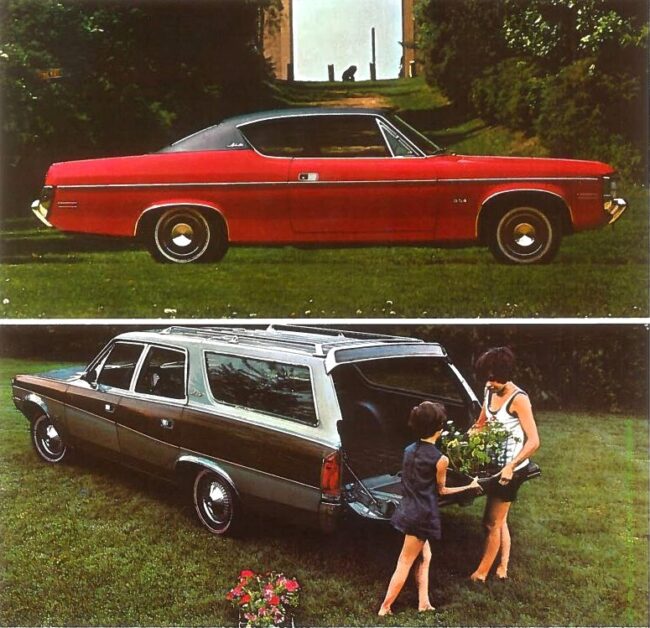
Before the 1974 Matador coupe, there was the 1971 Matador coupe, a restyle of the 1967-69 AMC Rebel with rather zaftig flanks added, which itself replaced the former Rambler/AMC Classic midsizer. Though the Coke-bottle sides made the sedan look rather lard-assed, the coupe was attractive, albeit still rather plain. In fact, during this time AMC rhetorically asked “What’s a Matador?” in their advertising. At a glance it could have been a Mopar or some other Detroit product. But that all changed for model year ’74.
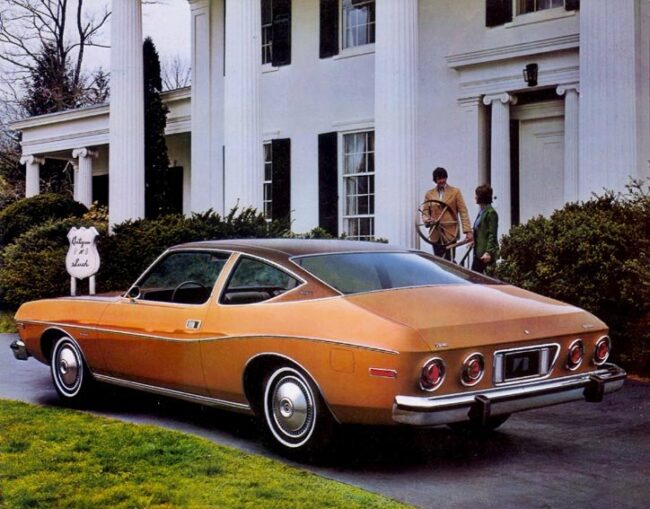
With this! Now, keep in mind in 1973 the GM intermediates lost their swoopy, semi-fastback looks and traded them for formal-roofed Broughmanticism. And the 1973-up Monte Carlo, Grand Prix, Cutlass Supreme and Regal found remarkable favor with consumers just starting to have kids, get married and trade in the Chevelle SS or Mustang. So why did the new Matador coupe look like a product of the late ’60s with 5-mph bumpers tacked on?
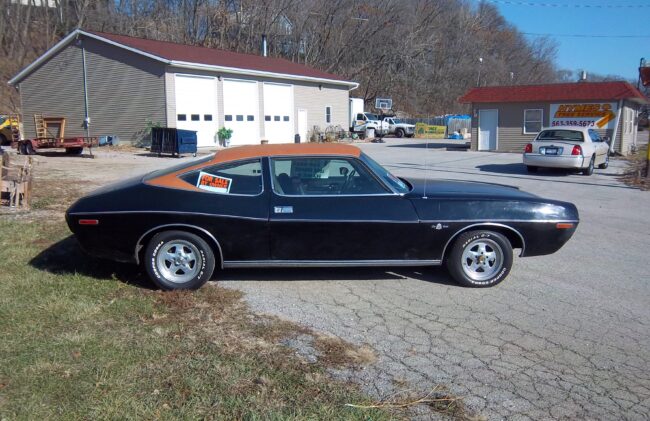
I mean, look at it. Does this say ’70s personal luxury coupe? Here’s another what-if for you: What if AMC had introduced this car in 1967 as a Rebel? With slim, not-yet-Federalized bumpers, it would have suggested the coming 1968 Javelin and AMX while bearing a family resemblance to the 1964-69 Rambler American with its deeply tunneled headlights. And it might have even sold. Maybe.
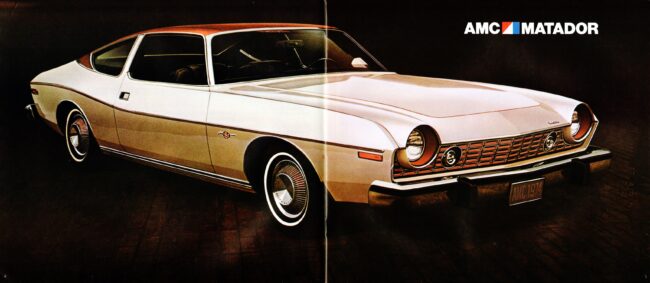
Oh, the press made all the right noises upon its introduction (that and three bucks will get you a cup of coffee), but despite the newness and, ahem, unique styling, only 31,169 base coupes, 21,026 Brougham coupes, and 10,074 X coupes were built in 1974. Not even 100K, at a time when even just the 1974 Malibu wagon saw over 44K units.
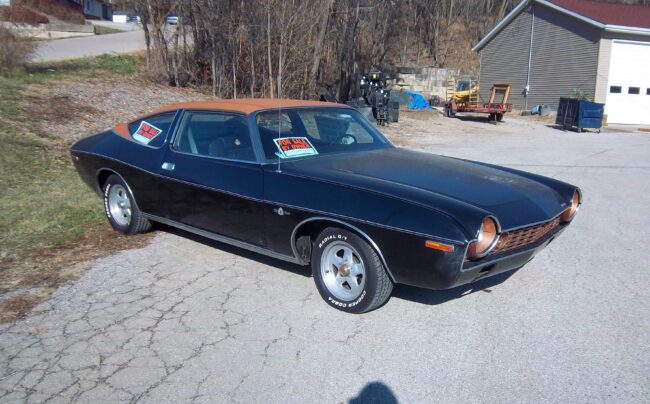
But for the few and the bold, a Matador coupe was certainly an interesting set of wheels, if you could get past the styling. I find these cars interesting, but my mother considers this the ugliest car ever built. I can see where she’s coming from! But it certainly isn’t bland, is it?
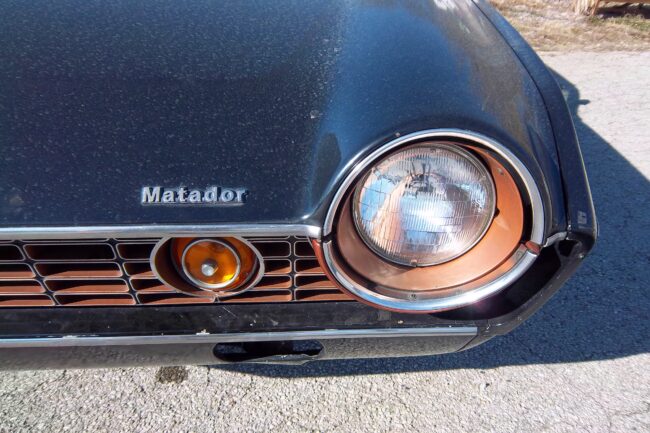
I actually rather like the nose, and this Cassini I found looks even better without the big, ungainly bumpers. The rusty chrome Pep Boys wheels would have to go, though.
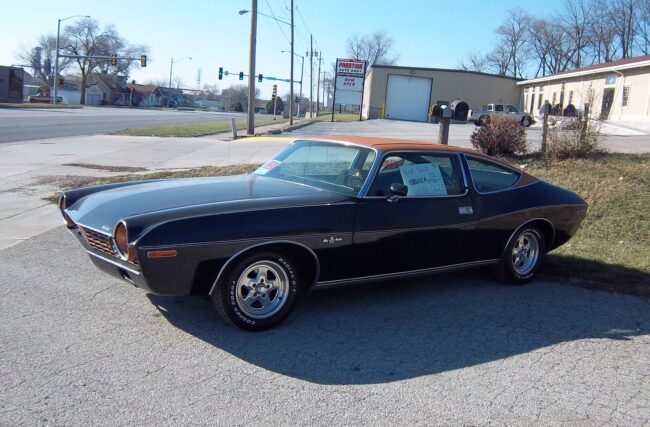
Yes, this is a genuine 1974 Oleg Cassini edition, one of 6,165 Cassinis built in 1974. Cassini Matadors beat the Designer Series Mark IVs by two model years and featured multiple copper accents on the wheel covers, grille, rear cove, and headlight buckets.
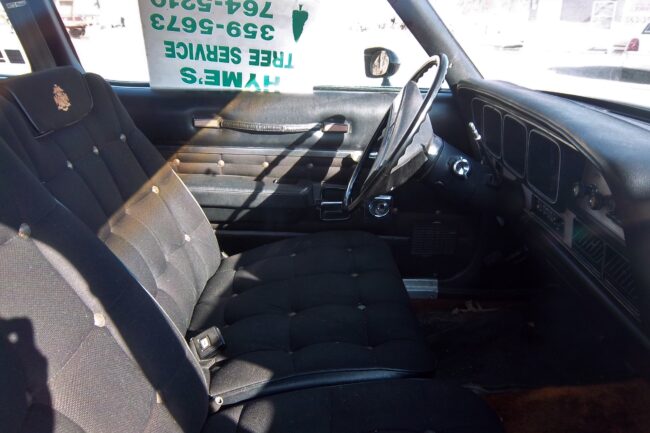
Inside, black cloth 50/50 divided seats were standard, with copper buttons and copper carpeting. Cassini crests adorned the headrests. These special editions were only available in A1 Snow White, P1 Classic Black or F9 Copper Metallic. As I recall, the standard “Bravado” grain vinyl roof was likewise only available in white, black or copper, but you could mix and match any of the colors–all white, all black, or, in this survivor’s case, black with a copper roof. I like this car’s combination.
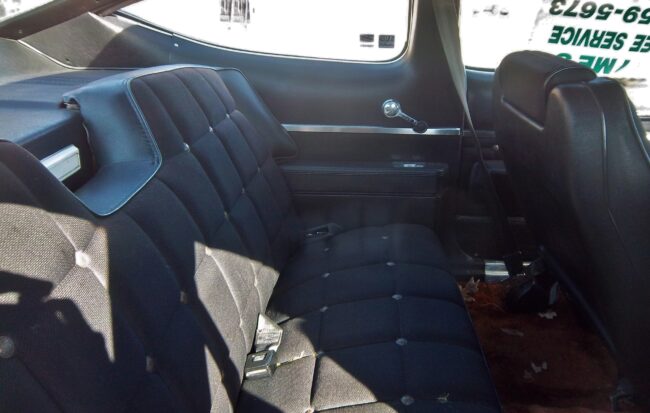
Unlike the GM Colonnade coupes, the rear windows did roll down, though I have no idea how far. The back seat reminds me of a fastback Barracuda; it looks like Matador’s rear seat should fold down–like the Plymouth–but it doesn’t.

Here you can see the heavily faded copper trim on the steering wheel boss and the instrument panel. The gauges themselves even have copper faces–on other Matadors the gauge faces were woodgrained.
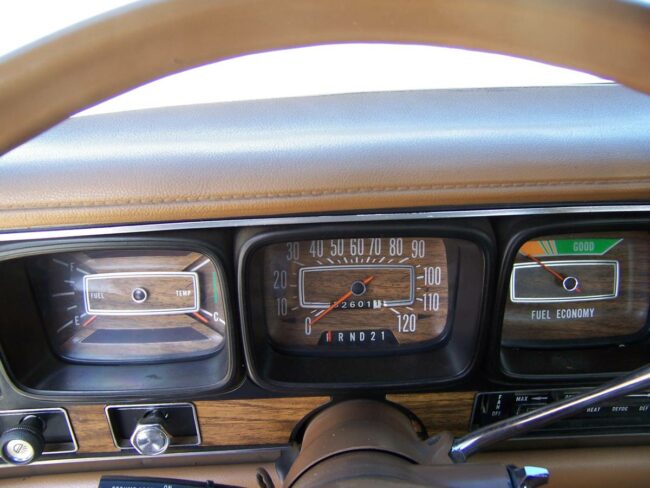
I kid you not.
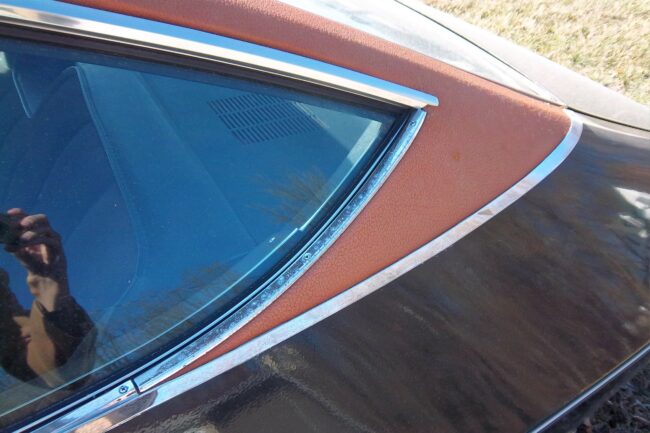
A lot of the details are attractive, especially the way the vinyl roof and window trim create a knife-edge contrast on the C-pillar.
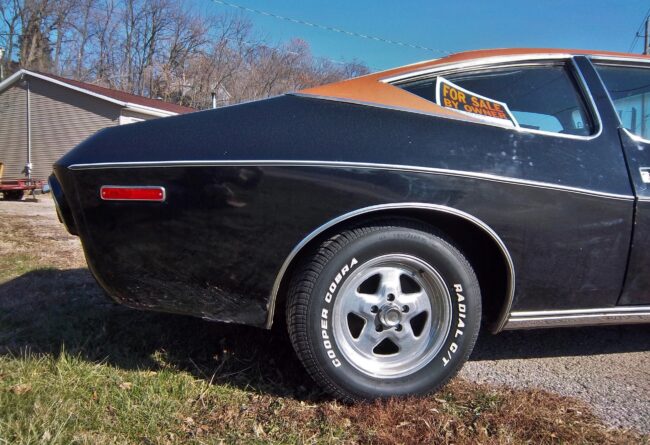
The rear quarter was attractive too, and just like up front, looks better without the giant 5-mph bumper. I repeat: this car should have been a ’67. Other than the Aunt Mildred’s parlour seating, this car SCREAMS 1967. Could have been the ’67 Marlin. Those bumpers might have looked bad, but they were there for a reason–just look at that knock around the outboard taillight. These taillights were my least favorite feature, and have always reminded me of, well, a botched boob job. Sorry!
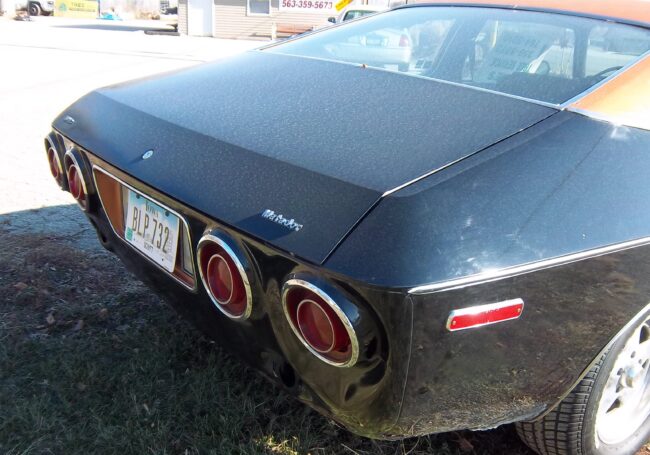
Honestly, I think a full width taillight panel, not unlike the 1970 Challenger, would have looked worlds better. The factory units look like something that would have been tacked onto a Les Dunham-modified Eldorado or Toronado.
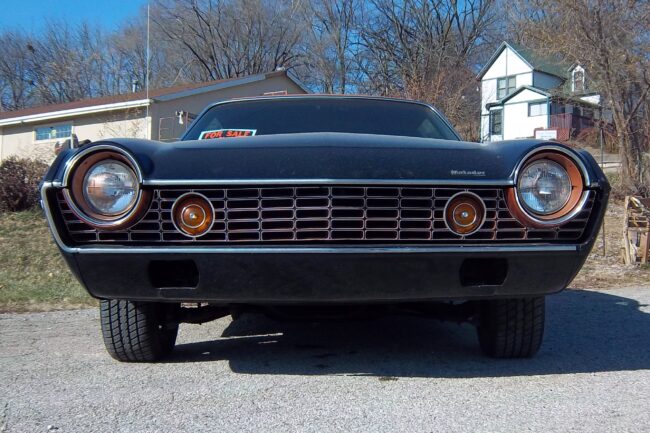
Seeing any Matador coupe these days is extremely rare–before spotting this one in Bettendorf a couple of weeks before Thanksgiving 2013. I hadn’t seen one in 25 years or more. Dumb luck or my old-car radar? Who knows? Produced only in 1974-75, the Cassini designer edition was replaced in 1976 with the Barcelona model, which took Brougham to a whole other level.
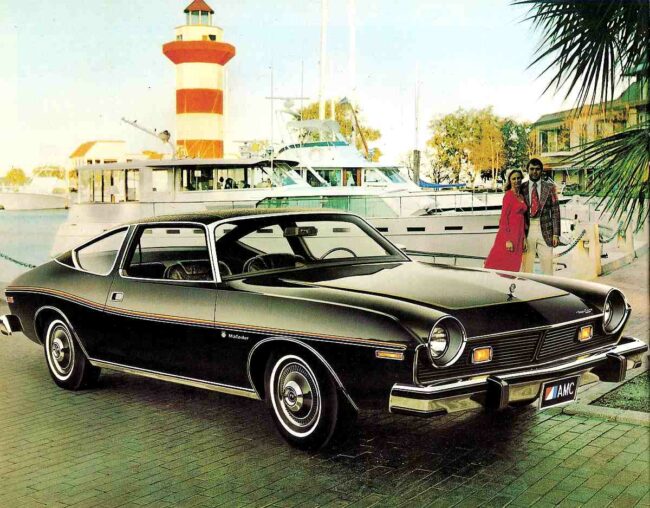
1976 Matador Barcelona
Look, even Herb Tarlek approved! Or a stand-in, at least. I imagine part of the name change was so AMC didn’t have to pay a fee to use “Barcelona” while they almost certainly did to use Cassini’s name. Plus, since the whole Matador coupe lineup was clearly tanking even by late ’75, I imagine the AMC execs thought it silly to pay a royalty on a model that did not even sell 2,000 units for MY 1975 (1,817, to be precise). Total production of Matador coupes of all stripes was 22,368.
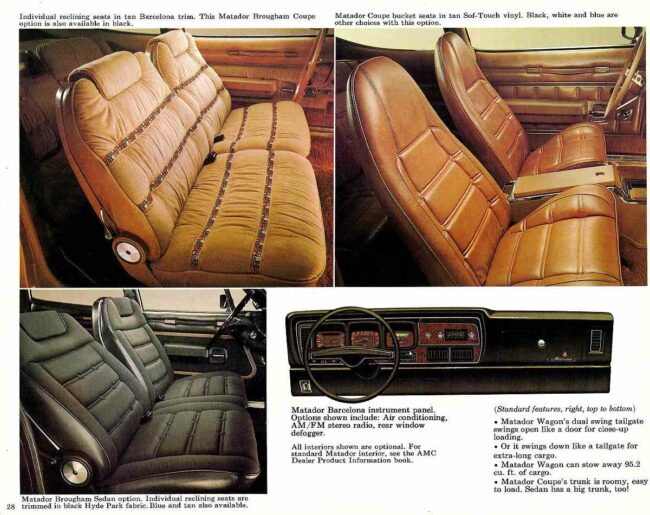
Instead of button-tufted brocade, the 1976 Barcelona gained velveteen crushed Barcelona (of course!) velour in tan or black. Quite the mini-Mark IV, but with none of the prestige. The 1977-78 Barcelona IIs are the gaudiest things to ever come out of Kenosha, with the possible exception of the Golden Eagle Jeep CJs and J-10 Honcho pickups. Well, what else could they do? The Brougham Era was in full swing, and they had about twelve cents to dress up their midsize failure. This car most certainly should not have a stand-up hood ornament! Or opera windows. Or a padded landau top…
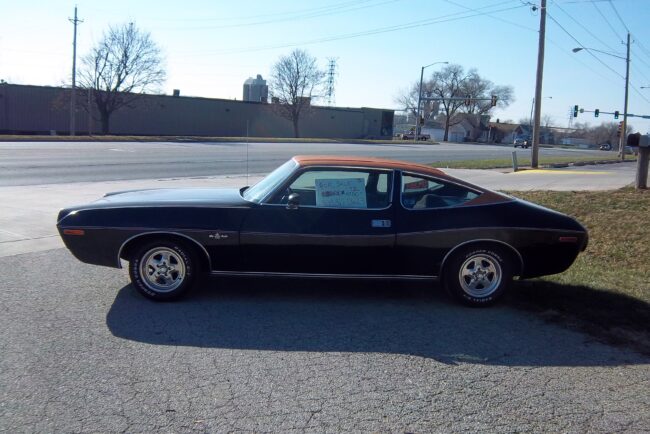
Seriously, who would have looked at a 1978 Cutlass Supreme or Buick Regal and decided on a Matador coupe? AMC dealers were so screwed! At least the 1978 Concord finally gave them a nice car to sell, even if it was just a Hornet with heavy makeup and thicker carpeting.

I first spotted this somewhat rough Cassini while on my way to fill up the now-departed 2000 Town Car Cartier (hint: the new daily is also a Lincoln). It was already dark, but I knew I had to go back and get pictures. These things are just not seen in 2013! So on Thanksgiving Day 2013, I made a little detour before heading to the folks’ for turkey and stuffing and took the pics you see here.
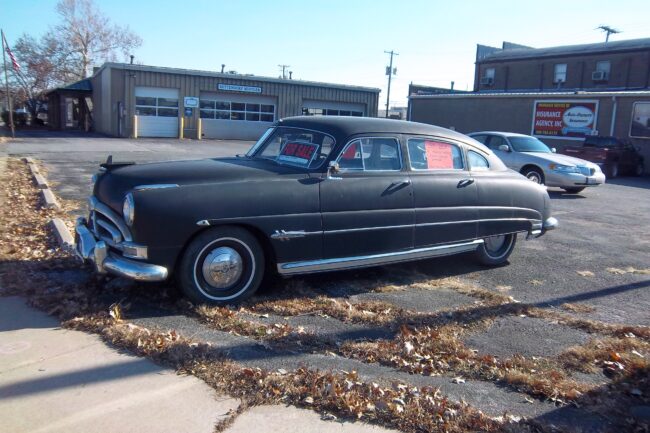
I also saw this Hudson about twenty minutes later!
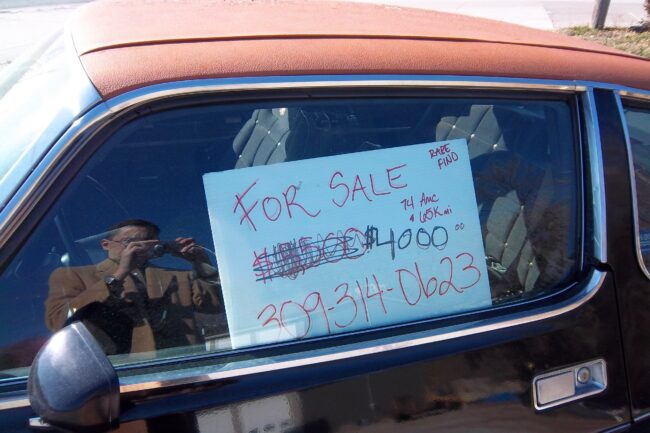
While not perfect, it was in fair shape despite the missing bumpers, and I saw no rust on it. Quite a feat for a NW Illinois/NE Iowa car. I would have preferred the deluxe “pot pie” full wheel covers, whitewalls and the bumpers though–for originality’s sake. Still, an amazing find, and it looked pretty good, for such an ugly car.
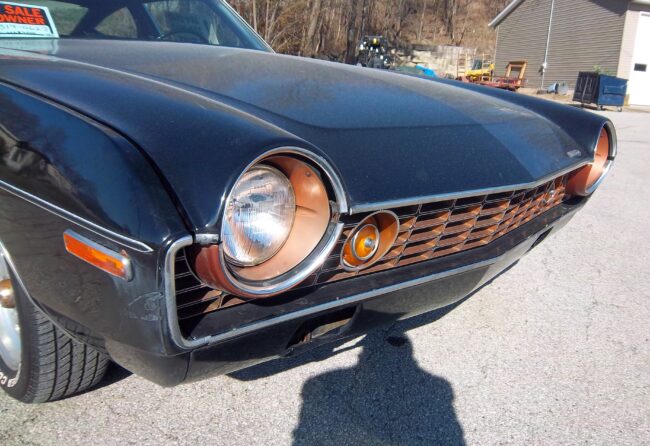
This car was for sale at the time, though that was several years ago. She’s long gone! $5,500 was scribbled out on the for sale sign with $4,000 replacing it. I like AMC, admire their trying new and different things to generate interest, though it never really paid off.
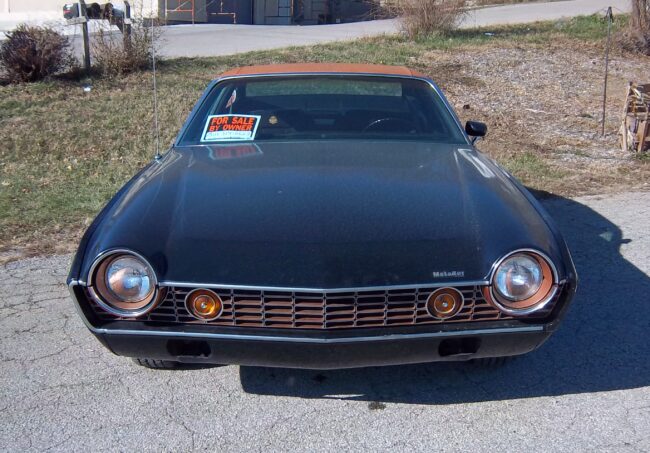
As for the Matador coupe itself, it never really took off. Indeed, it didn’t even have a very good first year–unlike its Pacer sibling that debuted in 1975. 1978 sales–the car’s swan-song–were a pathetic 2,006 units. So, AMC shot itself in the foot not once, but twice. The one-two punch of the Matador coupe and Pacer wiped out any future investment for new AMC products, and resulted in Renault’s essential buyout of the Kenosha-based company. Other than the moderate success of the 1978 Concord and related 1980 Eagle, there would be no future successes in their car line. Too bad.
P.S. Greenlight, bless their hearts, released a 1978 Matador Barcelona sedan in 1/64 scale this year. I immediately preordered two, and bought a third at Hobby Lobby. I won’t apologize for it.
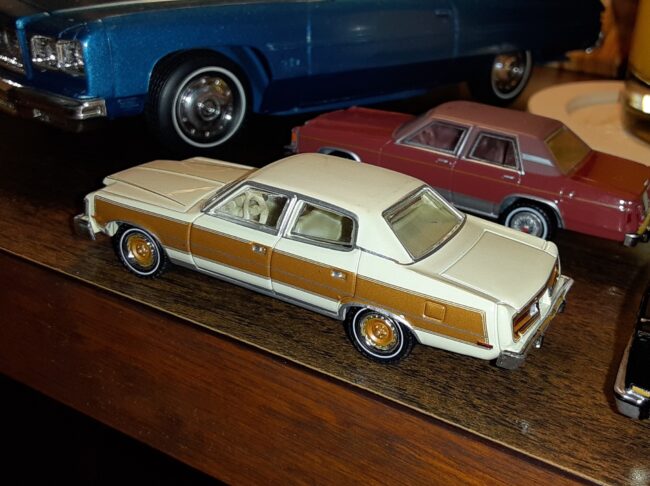
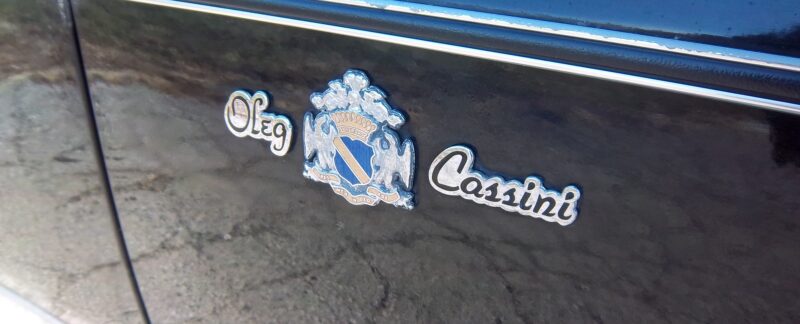

You may be correct about the ’74 Matador Coupe’s styling being stuck in the Sixties. I’m working on a piece about the AMX/3, the midengine Italian built supercar that Dick Teague badly wanted to go into production. While a lot of people think the AMX/3 was in response to Ford selling the Pantera, the truth is that AMC started working on the AMX/3 in 1967, before the Pantera was designed.
The ’74 Matador Coupe takes it’s swooping character line straight from the AMX/3 and the rear end was also influenced by the AMX/3.
It would have been difficult to go real Brougham with AMC’s limited new product dollars. The mid sizes were mostly fleet and cheapskate specials and as such did not provide the requisite smooth, quiet ride required. It is an untold story how Chrysler Engineering got the similar issues Cordoba to work so well in those regards despite the B body bones.
What AMC did have was a 401 V8 still available and an older shape with NASCAR pretentions. Any incremental extra sales would have raised average line selling price over fleet 4 door Matadors. In that context 60,000 sales in the first year given AMC’s market share doesn’t seem so bad.
This car was built to win super speedway races for Roger Penske’s NASCAR team. It seems that aerodynamic styling didn’t appeal much to people who found PLCs acceptable, but I do recall that Car and Driver picked it as the best-styled new model for 1974.
I don’t know why it didn’t do better, the styling isn’t that bad and it was the only car available in 1974 that could also fly. Perhaps they should have offered the Golden Gun edition.
De gustibus, I guess.
I think that Matador is lovely, better than any other domestic I can think of from 1974 – but then I despise the ’70s “hips” that were endemic on domestic cars.
(If I had to get any 1974 car, though, it’d be 280CE.)